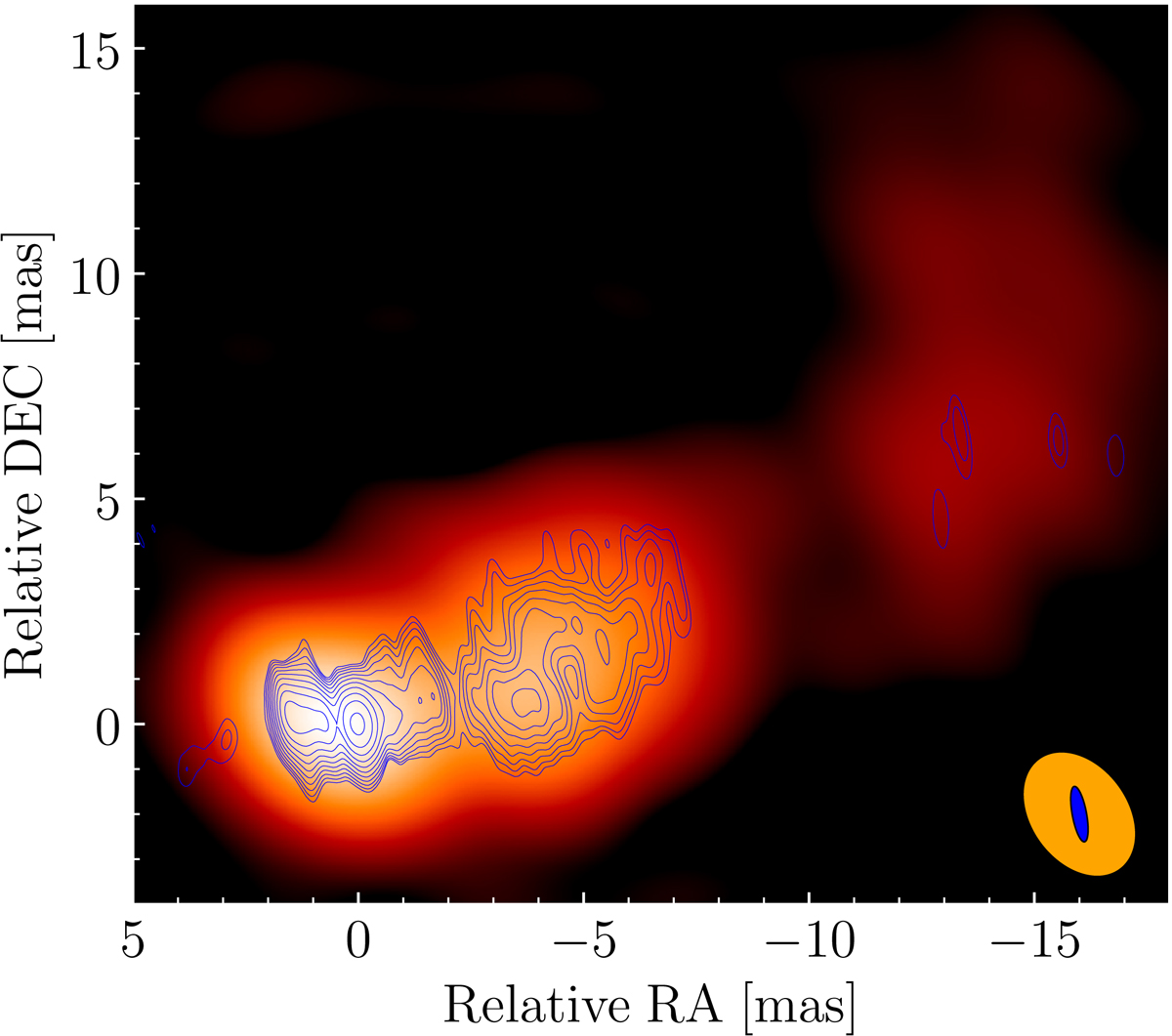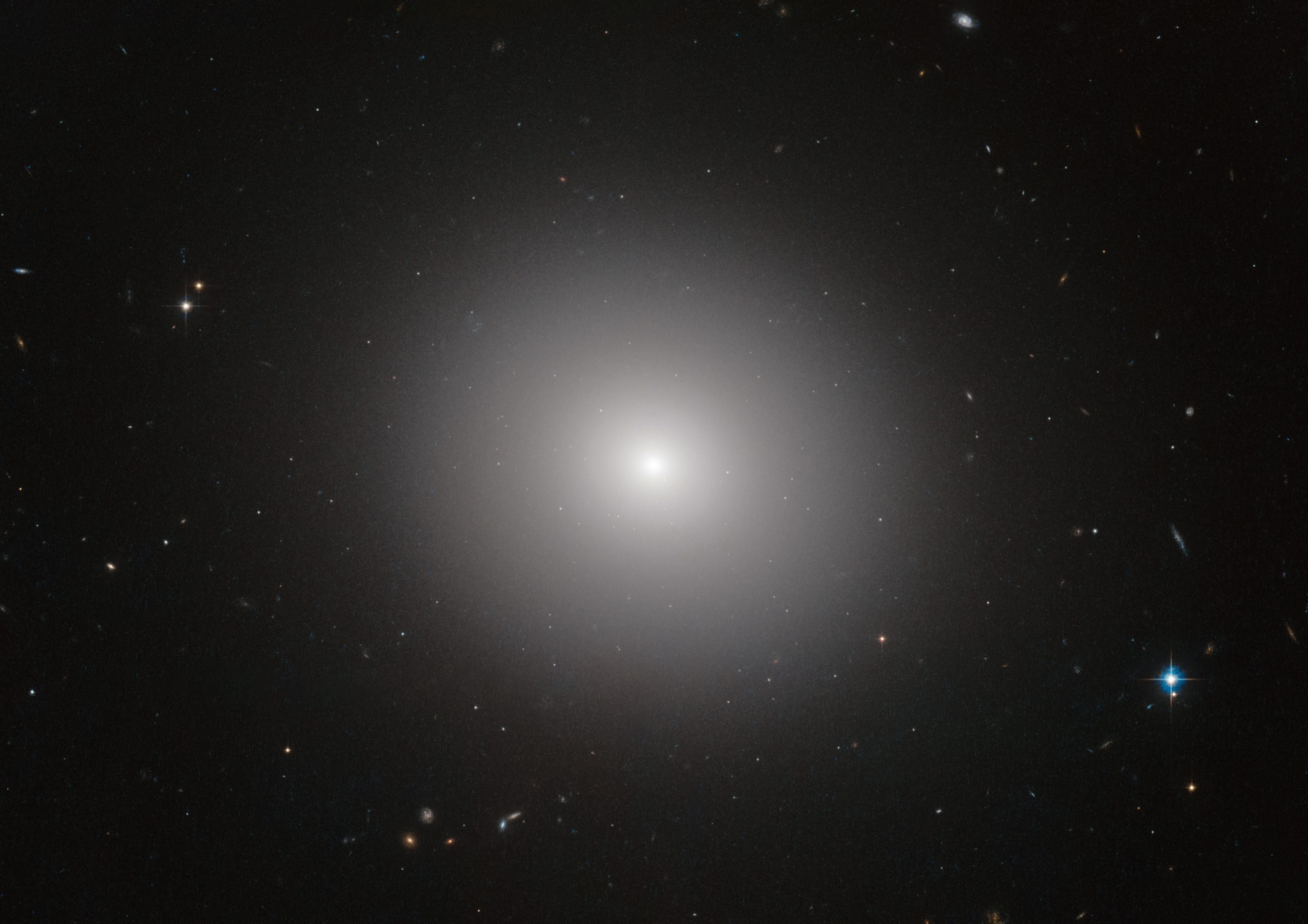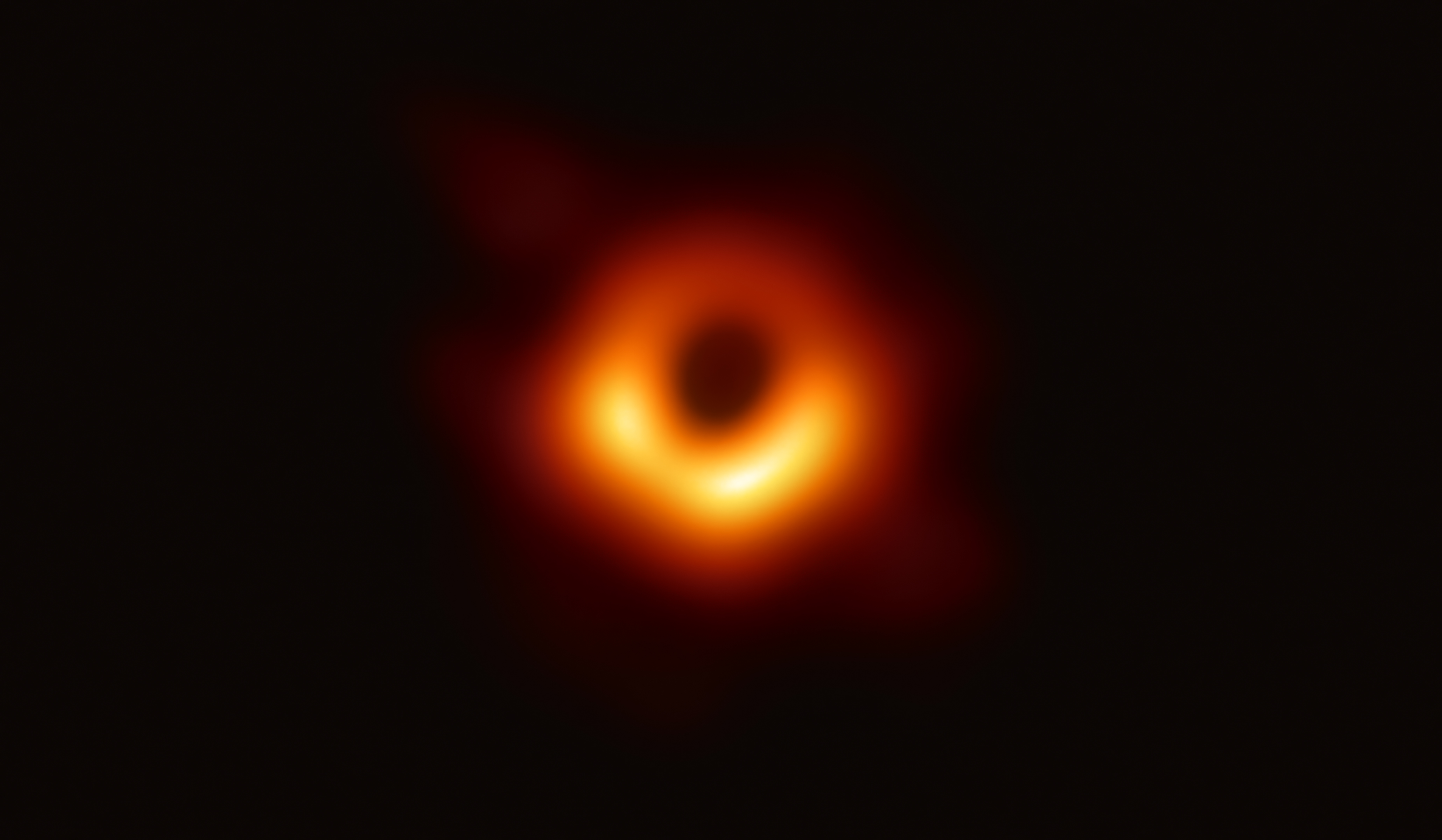|
3C 345
3C 345 is a blazar/ flat spectrum radio quasar located in the constellation of Hercules. It is noted for hosting a superluminal jet and its variability in almost all wave bands. Characteristics 3C 345 has an active galactic nucleus that has been categorised as a blazar or as a flat spectrum radio quasar. The host galaxy of 3C 345 is an E3 elliptical galaxy without prominent peculiar characteristics. Superluminal jet When observed in radio waves, 3C 345 features a compact region with a radio jet emanating from it for 3 arcseconds and ending at a hot spot. The jet appears straight for 4 milliarcseconds (mas) but then curves northwards. Hot spots are visible at the counterjet direction in radio images. There is also a faint halo. The jet has been found to emit X-rays, up until 0.2 arcseconds from a radio hot spot, which could be in reality a bend of the jet. The radio jet exhibits superluminal motion for 0.12 to 12 mas, with apparent speeds that accelerate from ~5 c to ~15c w ... [...More Info...] [...Related Items...] OR: [Wikipedia] [Google] [Baidu] |
Third Cambridge Catalogue Of Radio Sources
The Third Cambridge Catalogue of Radio Sources (3C) is an astronomical catalogue of celestial radio sources detected originally at 159 MHz, and subsequently at 178 MHz. History 3C The catalogue was published in 1959 by members of the Cavendish Astrophysics Group, Radio Astronomy Group of the University of Cambridge. Entries in the catalogue are identified by the prefix "3C" followed by the entry number, with a space - for example, 3C 273. The number denotes objects in order of increasing right ascension. The catalogue was produced using the Cambridge Interferometer on the west side of Cambridge. The interferometer had previously been used for the Second Cambridge Catalogue of Radio Sources (2C) survey, published in 1955. 3CR The catalogue was subsequently revised by Bennett in 1962 using observations at 178 MHz, and for many years '3CR' was considered as the definitive listing of the brighter radio sources in the Northern Hemisphere. The revision resulted in a num ... [...More Info...] [...Related Items...] OR: [Wikipedia] [Google] [Baidu] |
Elliptical Galaxy
An elliptical galaxy is a type of galaxy with an approximately ellipsoidal shape and a smooth, nearly featureless image. They are one of the three main galaxy morphological classification, classes of galaxy described by Edwin Hubble in his Hubble sequence#Physical significance, Hubble sequence and 1936 work ''The Realm of the Nebulae'', with their intermediate scale disks, a subset of the "early-type" galaxy population. Most elliptical galaxies are composed of older, stellar evolution#Low-mass stars, low-mass stars, with a sparse interstellar medium, and they tend to be surrounded by large numbers of globular clusters. Star formation activity in elliptical galaxies is typically minimal; they may, however, undergo brief periods of star formation when merging with other galaxies. Elliptical galaxies are believed to make up approximately 10–15% of galaxies in the Virgo Supercluster, and they are not the dominant type of galaxy in the universe overall. They are preferentially fou ... [...More Info...] [...Related Items...] OR: [Wikipedia] [Google] [Baidu] |
OVV Quasars
An optically violent variable quasar (often abbreviated as OVV quasar) is a type of highly variable quasar. It is a subtype of blazar that consists of a few rare, bright radio galaxies, whose visible light output can change by 50% in a day. OVV quasars have essentially become unified with highly polarized quasars (HPQ), core-dominated quasars (CDQ), and flat-spectrum radio quasars (FSRQ). Different terms are used, but the term FSRQ is gaining popularity, effectively making the other terms archaic. At visible wavelengths, they are similar in appearance to BL Lac objects but generally have stronger broad emission lines. Examples *3C 279 3C 279 (also known as 4C–05.55, NRAO 413, and PKS 1253–05) is an OVV quasar, optically violent variable quasar (OVV), which is known in the astronomical community for its variations in the Visible spectrum, visible, Radio frequency, radio and ... * S5 0014+81 References * * Active galaxy types {{quasar-stub ... [...More Info...] [...Related Items...] OR: [Wikipedia] [Google] [Baidu] |
Accretion Disk
An accretion disk is a structure (often a circumstellar disk) formed by diffuse material in orbital motion around a massive central body. The central body is most frequently a star. Friction, uneven irradiance, magnetohydrodynamic effects, and other forces induce instabilities causing orbiting material in the disk to spiral inward toward the central body. Gravitational and frictional forces compress and raise the temperature of the material, causing the emission of electromagnetic radiation. The frequency range of that radiation depends on the central object's mass. Accretion disks of young stars and protostars radiate in the infrared; those around neutron stars and black holes in the X-ray part of the spectrum. The study of oscillation modes in accretion disks is referred to as diskoseismology. Manifestations Accretion disks are a ubiquitous phenomenon in astrophysics; active galactic nuclei, protoplanetary disks, and gamma ray bursts all involve accretion disks. These di ... [...More Info...] [...Related Items...] OR: [Wikipedia] [Google] [Baidu] |
Supermassive Black Hole
A supermassive black hole (SMBH or sometimes SBH) is the largest type of black hole, with its mass being on the order of hundreds of thousands, or millions to billions, of times the mass of the Sun (). Black holes are a class of astronomical objects that have undergone gravitational collapse, leaving behind spheroidal regions of space from which nothing can escape, including light. Observational evidence indicates that almost every large galaxy has a supermassive black hole at its center. For example, the Milky Way galaxy has a supermassive black hole at its center, corresponding to the radio source Sagittarius A*. Accretion of interstellar gas onto supermassive black holes is the process responsible for powering active galactic nuclei (AGNs) and quasars. Two supermassive black holes have been directly imaged by the Event Horizon Telescope: the black hole in the giant elliptical galaxy Messier 87 and the black hole at the Milky Way's center (Sagittarius A*). Descr ... [...More Info...] [...Related Items...] OR: [Wikipedia] [Google] [Baidu] |
Fermi Gamma-ray Space Telescope
The Fermi Gamma-ray Space Telescope (FGST, also FGRST), formerly called the Gamma-ray Large Area Space Telescope (GLAST), is a space observatory being used to perform gamma-ray astronomy observations from low Earth orbit. Its main instrument is the Large Area Telescope (LAT), with which astronomers mostly intend to perform an all-sky survey studying astrophysical and cosmological phenomena such as active galactic nuclei, pulsars, other high-energy sources and dark matter. Another instrument aboard Fermi, the Gamma-ray Burst Monitor (GBM; formerly GLAST Burst Monitor), is being used to study gamma-ray bursts and solar flares. Fermi, named for high-energy physics pioneer Enrico Fermi, was launched on 11 June 2008 at 16:05 UTC aboard a Delta II 7920-H rocket. The mission is a joint venture of NASA, the United States Department of Energy, and government agencies in France, Germany, Italy, Japan, and Sweden, becoming the most sensitive gamma-ray telescope on orbit, succeeding ... [...More Info...] [...Related Items...] OR: [Wikipedia] [Google] [Baidu] |
Gamma-ray Burst
In gamma-ray astronomy, gamma-ray bursts (GRBs) are extremely energetic events occurring in distant Galaxy, galaxies which represent the brightest and most powerful class of explosion in the universe. These extreme Electromagnetic radiation, electromagnetic emissions are second only to the Big Bang as the most energetic and luminous phenomenon ever known. Gamma-ray bursts can last from a few milliseconds to several hours. After the initial flash of gamma rays, a longer-lived afterglow is emitted, usually in the longer wavelengths of X-ray, ultraviolet, visible spectrum, optical, infrared, microwave or radio waves, radio frequencies. The intense radiation of most observed GRBs is thought to be released during a supernova or superluminous supernova as a high-mass star implodes to form a neutron star or a black hole. Short-duration (sGRB) events are a subclass of GRB signals that are now known to originate from the cataclysmic Neutron star merger, merger of binary neutron stars. Th ... [...More Info...] [...Related Items...] OR: [Wikipedia] [Google] [Baidu] |
R Band
In astronomy, a photometric system is a set of well-defined passbands (or optical filters), with a known sensitivity to incident radiation. The sensitivity usually depends on the optical system, detectors and filters used. For each photometric system a set of primary standard stars is provided. A commonly adopted standardized photometric system is the Johnson-Morgan or UBV photometric system (1953). At present, there are more than 200 photometric systems. Photometric systems are usually characterized according to the widths of their passbands: * broadband (passbands wider than 30 nm, of which the most widely used is Johnson-Morgan UBV system) * intermediate band (passbands between 10 and 30 nm wide) * narrow band (passbands less than 10 nm wide) Photometric letters Each letter designates a section of light of the electromagnetic spectrum; these cover well the consecutive major groups, near-ultraviolet (NUV), visible light (centered on the V band), near-infrare ... [...More Info...] [...Related Items...] OR: [Wikipedia] [Google] [Baidu] |
Light Speed
The speed of light in vacuum, commonly denoted , is a universal physical constant exactly equal to ). It is exact because, by international agreement, a metre is defined as the length of the path travelled by light in vacuum during a time interval of second. The speed of light is the same for all observers, no matter their relative velocity. It is the upper limit for the speed at which information, matter, or energy can travel through space. All forms of electromagnetic radiation, including visible light, travel at the speed of light. For many practical purposes, light and other electromagnetic waves will appear to propagate instantaneously, but for long distances and sensitive measurements, their finite speed has noticeable effects. Much starlight viewed on Earth is from the distant past, allowing humans to study the history of the universe by viewing distant objects. When communicating with distant space probes, it can take hours for signals to travel. In computing, th ... [...More Info...] [...Related Items...] OR: [Wikipedia] [Google] [Baidu] |
Superluminal Motion
In astronomy, superluminal motion is the apparently faster-than-light motion seen in some radio galaxies, BL Lac objects, quasars, blazars and recently also in some galactic sources called microquasars. Bursts of energy moving out along the relativistic jets emitted from these objects can have a proper motion that appears greater than the speed of light. All of these sources are thought to contain a black hole, responsible for the ejection of mass at high velocities. Light echoes can also produce apparent superluminal motion. Explanation Superluminal motion occurs as a special case of a more general phenomenon arising from the difference between the apparent speed of distant objects moving across the sky and their actual speed as measured at the source. In tracking the movement of such objects across the sky, a calculation of their speed can be determined by a simple distance divided by time formula. If the distance of the object from the Earth is known and the angular sp ... [...More Info...] [...Related Items...] OR: [Wikipedia] [Google] [Baidu] |
Radio Waves
Radio waves (formerly called Hertzian waves) are a type of electromagnetic radiation with the lowest frequencies and the longest wavelengths in the electromagnetic spectrum, typically with frequencies below 300 gigahertz (GHz) and wavelengths greater than , about the diameter of a grain of rice. Radio waves with frequencies above about 1 GHz and wavelengths shorter than 30 centimeters are called microwaves. Like all electromagnetic waves, radio waves in vacuum travel at the speed of light, and in the Earth's atmosphere at a slightly lower speed. Radio waves are generated by charged particles undergoing acceleration, such as time-varying electric currents. Naturally occurring radio waves are emitted by lightning and astronomical objects, and are part of the blackbody radiation emitted by all warm objects. Radio waves are generated artificially by an electronic device called a transmitter, which is connected to an antenna, which radiates the waves. They are receiv ... [...More Info...] [...Related Items...] OR: [Wikipedia] [Google] [Baidu] |
Quasar
A quasar ( ) is an extremely Luminosity, luminous active galactic nucleus (AGN). It is sometimes known as a quasi-stellar object, abbreviated QSO. The emission from an AGN is powered by accretion onto a supermassive black hole with a mass ranging from millions to tens of billions of solar masses, surrounded by a gaseous Accretion disk, accretion disc. Gas in the disc falling towards the black hole heats up and releases energy in the form of electromagnetic radiation. The radiant energy of quasars is enormous; the most powerful quasars have luminosity, luminosities thousands of times greater than that of a galaxy such as the Milky Way. Quasars are usually categorized as a subclass of the more general category of AGN. The redshifts of quasars are of Expansion of the universe, cosmological origin. The term originated as a Contraction (grammar), contraction of "quasi-stellar ''[star-like]'' radio source"—because they were first identified during the 1950s as sources of radio-wave ... [...More Info...] [...Related Items...] OR: [Wikipedia] [Google] [Baidu] |









